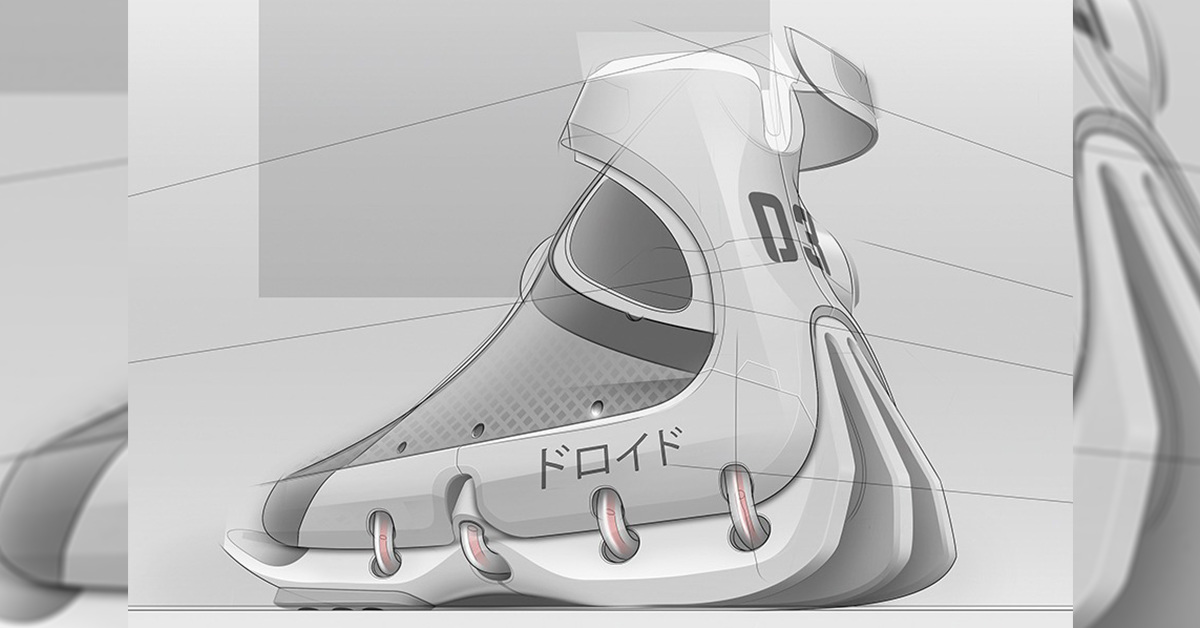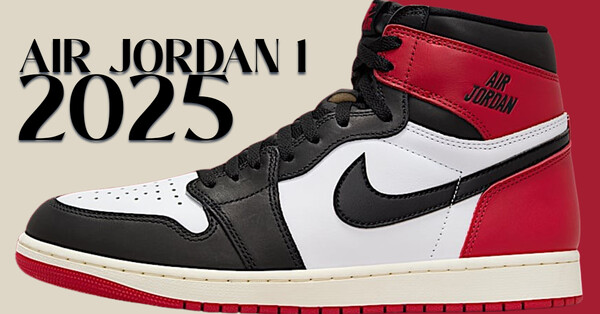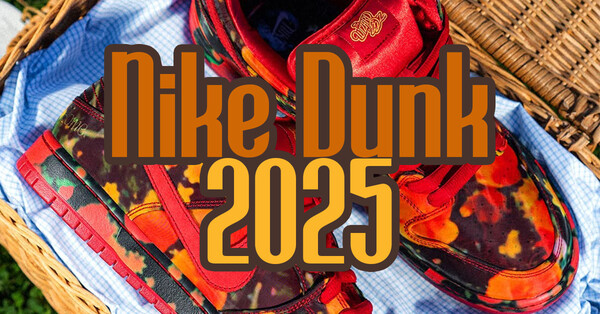.jpg)
What is the Future of the Shoe?
In this special article, we look into the crystal ball to find out what's next for the footwear industry. "A quiet revolution" is underway and Daniel Bailey, founder of Mr Bailey, predicts that a comeback of indie brands, sustainable production and 3D printing could be the pillars of our future. We also take a look at some of the most important trends of our time, with a special focus on the small brands that we think are becoming increasingly important.
Sneaker silhouettes are becoming more and more daring. Look at an adidas NMD or the EQT ADV and you'll practically see the ultra-aggressive triangle shape. We're also seeing innovative interpretations of iconic styles that we've never seen before. Whether it's beautifully designed hybrid sneaker boots for winter like the Nike Air Max 95 Sneakerboot, sandal versions of sneakers like the Reebok Instapump Fury Sandal, or traditional styles translated into one-piece uppers like New Balance with its Deconstructed series.
Collaborations with celebrities are at the forefront, allowing more trend-conscious women than ever to get excited about sneakers. And thanks to celebrity collaborations, sneakerheads who may have been a little "safer" in their shoe choices can now wear something a little more daring - which is brilliant for shoe designers, because there's nothing worse than stagnation.
Sneaker silhouettes are becoming more and more daring. Look at an adidas NMD or the EQT ADV and you'll practically see the ultra-aggressive triangle shape. We're also seeing innovative interpretations of iconic styles that we've never seen before. Whether it's beautifully designed hybrid sneaker boots for winter like the Nike Air Max 95 Sneakerboot, sandal versions of sneakers like the Reebok Instapump Fury Sandal, or traditional styles translated into one-piece uppers like New Balance with its Deconstructed series.
Collaborations with celebrities are at the forefront, allowing more trend-conscious women than ever to get excited about sneakers. And thanks to celebrity collaborations, sneakerheads who may have been a little "safer" in their shoe choices can now wear something a little more daring - which is brilliant for shoe designers, because there's nothing worse than stagnation.
.jpg)
Filling Pieces has set a new standard for independent footwear brands, especially with their latest collection
If we look at the rivalry between adidas and Nike, we see a gap where obscure middle-class indie brands can squeeze in and thrive in their own way. The internet also plays a big role in helping smaller brands stay relevant and sustain themselves. Because they can sell directly to consumers, brands can keep their profit margins relatively low while the shops take a big cut; this in turn allows them to invest in themselves. This fact is restructuring the way the footwear industry has operated for decades.
.jpg)
The Black brand pushes both performance and casual footwear, utilising innovative construction and offering unique and sophisticated footwear.
Smaller brands can generally move much more freely than their larger counterparts, which allows them to challenge and manipulate certain aspects of the industry. Some do without trade fairs - why do they need them when they can sell directly to the consumer via their website? Others, such as FEIT, do not offer their shoes on a traditional seasonal basis, but simply launch their products when it suits both the brand and the customer best.
.jpg)
At the same time, more innovative construction methods allow smaller brands to offer more interesting and innovative trainers. At a time when technologies like 3D printing are realistically only a few years away from being a commercially viable option for the footwear industry, we are on the cusp of a total revolution, not only in how footwear is designed and manufactured, but also in how consumers buy and interact with brands. Hyperlocal manufacturing and higher levels of customisation will soon be a reality.
Nike continues to innovate, even though the past year has been relatively quiet compared to the high standards of the past. Aside from adidas becoming extremely popular in recent seasons, the company has done a great job pushing collaborations and incorporating Y-3 into their original styles. They have also taken innovation to a new level, the FutureCraft series being one of many brilliant examples.
Nike continues to innovate, even though the past year has been relatively quiet compared to the high standards of the past. Aside from adidas becoming extremely popular in recent seasons, the company has done a great job pushing collaborations and incorporating Y-3 into their original styles. They have also taken innovation to a new level, the FutureCraft series being one of many brilliant examples.
.jpg)
Casbia combines true Italian craftsmanship with rugged and bold porportionality to deliver incredibly eye-catching and beautiful footwear.
Whether it's the collaboration with innovative London-based product design agency Alexander Taylor Studio or the hyper-local, fully automated Speed Factory concept, adidas is driving innovation and sustainability in more exciting ways than any other major brand currently in the game.
Innovation and sustainability have never been more closely linked than in recent years. The latter has long been a dirty word, and sustainable footwear has generally been associated with hippie eco-warriors wearing ugly dad sandals. But as bigger and more aesthetically pleasing brands look to combine sustainability with innovation, such as the adidas x Parley Ultraboost, the expectation of well-made, aesthetically pleasing, sustainably produced footwear will change.
Innovation and sustainability have never been more closely linked than in recent years. The latter has long been a dirty word, and sustainable footwear has generally been associated with hippie eco-warriors wearing ugly dad sandals. But as bigger and more aesthetically pleasing brands look to combine sustainability with innovation, such as the adidas x Parley Ultraboost, the expectation of well-made, aesthetically pleasing, sustainably produced footwear will change.
.jpg)
Smaller brands have already started to push and reshape the way we look at sustainably produced footwear. Other German brands collaborated with sustainable footwear brand EKN Footwear, among others, to create innovative, aesthetically pleasing yet sustainable shoes. The response to the unique BAMBOO runners with front or back lacing was truly unprecedented and proved that a sustainably produced sneaker can still be innovative. There are also quite a few new, smaller brands producing beautiful, sustainably produced shoes, like the young brand SARTRE Footwear.
.jpg)
Sartre creates new classics, bringing together sustainability and effortless style.
It's really the small to mid-sized independent brands that will shape the future and push sneakerheads to move outside of their predetermined brand affiliations. Brandblack is launching sneakers and apparel on and off the court like no other indie brand before. There's Clear Weather, Casbia or EKN, all launching stunning casual footwear. Filling Pieces continues to dominate this part of the market. Cole Haan, with its innovation lab in New Hampshire and recent release of some incredible products, is also a brand to keep an eye on.
.jpg)
Cole Haan combines innovation and beautifully crafted, traditional menswear better than any other brand on the market.
Functionality will of course continue to play a big role in performance sneakers, however the way it is produced will change due to technology opening up new avenues of development. Body-hugging, ground-hugging trainers that correct posture and foot shape will continue to flourish and find new ways to adapt to individual consumer needs. Again, 3D-printed elements will enable greater unique functionality and provide solutions to problems athletes face in their everyday lives.
.jpg)
A look at a modern concept inspired by an iconic silhouette. Illustration by Daniel Bailey.
Science will further develop the material and enable a more harmonious combination of technology and natural materials. This, in turn, will allow shoes not only to be highly functional, but also to produce good products. Imagine, for example, a sneaker in the future that does something good for our bodies by allowing vitamins or bacteria-enriched materials to enter our bodies through our feet.
.jpg)





.jpg)
.jpg)